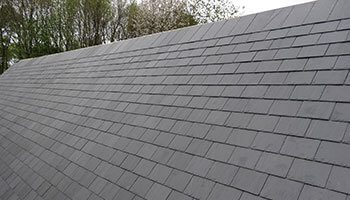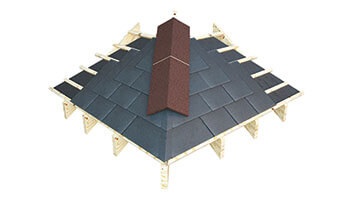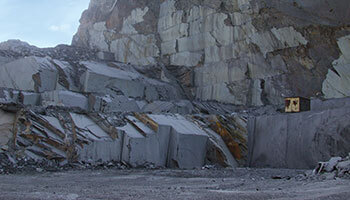This article explores the thee most critical tests within the Natural Slate Standard, “BS EN 12326:2014 Slate and stone for discontinuous roofing and external cladding. Specifications for slate and carbonate slate”.
BS EN 12326 is designed to enable the specifier or purchaser to compare the key physical properties of natural slates to ensure the best fit for the project in mind. A broad range of attributes are tested, but the three most critical areas are:
- Water Absorption (W)
- Thermal cycle (T)
- Sulphur Dioxide Exposure (S)
BS EN 12326 replaced the previous natural slate standard, BS 680.
Water Absorption
Excessive water absorption will result in natural slate being vulnerable to frost damage, increased weathering and cracking. If the slate absorbs 0.6% or less of its mass in water, it is classified as W1 (≤ 0,6%), the highest grade, and needs no further testing.
All SIGA slates have been tested to W1 (≤ 0,6%) standard.
Thermal Cycle
Essentially, this process assesses the likely levels of rust or oxidisation within the slate due to the presence of pyrites. The test involves repeatedly soaking six pieces of natural slate in water and then drying them out over a period of up to three weeks. The samples are then inspected for corrosion. The results are classified as follows:
T1: No apparent change or some surface rust or other changes that neither affect the structure, nor form runs of discolouration.
T2: Oxidation or appearance changes of the metallic inclusions with runs of discolouration but without structural changes. SIGA Natural Slate does not supply T2 slates.
T3: Oxidation or appearance changes of metallic minerals that penetrate the slate and risk forming holes. SIGA Natural Slate does not supply T3 slates.
All SIGA slates have been independently tested to T1 standard.
Sulphur Dioxide Exposure
This test examines the ability of the slate to resist atmospheric pollutants. The natural slate samples are placed in a hermetically sealed container for up to three weeks and subjected to a standardised mechanical scraping test to measure any softness caused by the chemical disintegration of any carbonate content. Results are shown as:
S1 (no change),
S2 (the slate must be split at least 5% thicker) or
S3 (slates must be at least 8mm).
Slates containing more than 20% carbonate content are not suitable for roofing or external cladding.
All SIGA slates have been independently tested to S1 standard.





